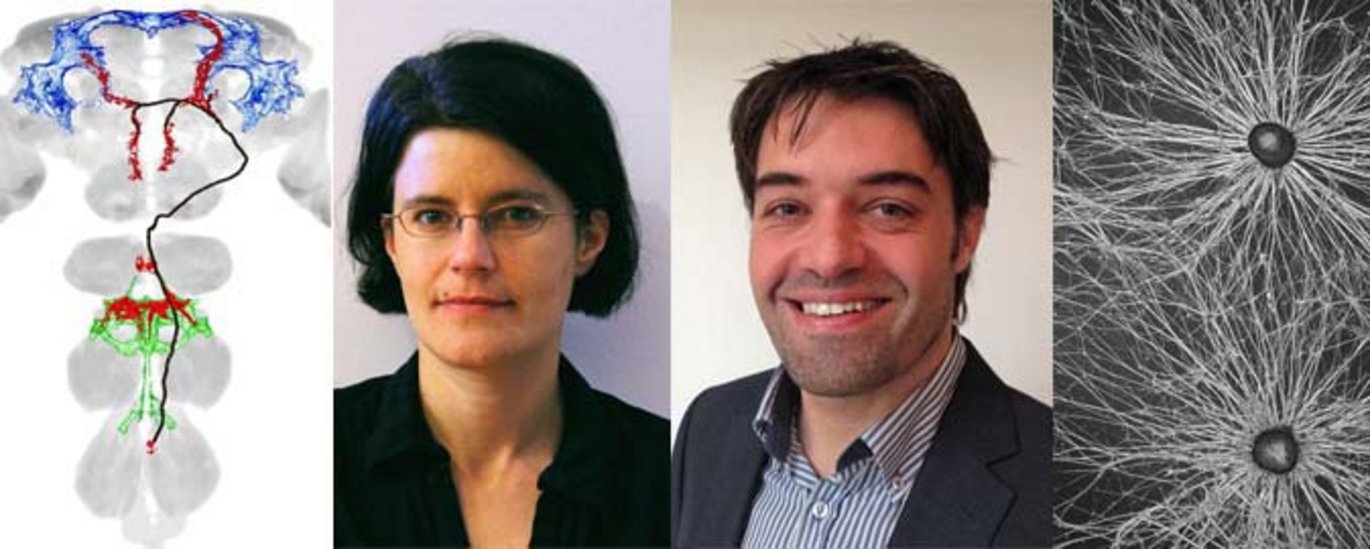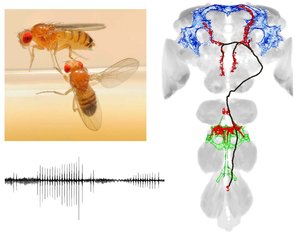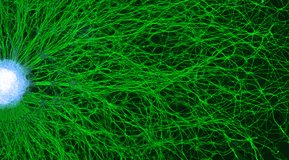DANDRITE udpeger de første to forskningsgruppeledere
DANDRITE har udpeget Anne von Philipsborn og Mark Denham som de gruppeledere. Disse ansættelser er de første to i en serie af fem gruppeledere, som skal ansættes ved DANDRITE. Mark og Anne starter deres forskning ved DANDRITE i henholdsvis december og januar.

Anne von Philipsborn:
Anne von Philipsborn kommer fra Research Institute of Molecular Pathology (IMP), Wien, Østrig. Ved brug af bananfluen Drosophila som modelorganisme fokuserer hendes forskning på, hvordan nervesystemet genererer og kontrollerer adfærd. Planer for fremtidig forskning inkluderer brug af Drosophila som modelsystem til at opnå større forståelse af molekylære og cellulære aspekter i degenerering af nervesystemet.
Mark Denham:
Mark Denham kommer fra Department of Medical Biochemistry and Biophysics, Karolinska Institutet (KI), Stockholm, Sverige, og tidligere fra Melbourne Universitet i Australien. I hans forskning arbejder han med humane embryoniske stamceller og inducerede pluripotente stamceller for at studere, hvordan nervesystemet udvikles, samt de processer der er involveret i degeneration af nervesystemet. Det fremtidige mål er at bruge dopaminerge neuroner fra mesencephalon (center i hjernen) som in vitro modeller til at studere de bagvedlæggende mekanismer for Parkinsons sygdom. Derudover vil forskningen være målrettet translationel og klinisk medicin.
Detaljeret beskrivelse på engelsk af de to nye gruppelederes forskning
En Drosophila-han synger til en hun ved at udbrede Drosophilas centrale nervesystem med tre neuroklasser (Blå, rød og grøn), som kontrollerer adfærd som | Anne von Philipsborn’s reseach: Drosophila circuit neuroscience and behavioral genetics laboratory How does the nervous system generate and control behavior? Neuronal circuits record, categorise and integrate sensory input, store information and coordinate motor output. Dissecting the basic mechanisms by which ensembles of neurons perform these various computational tasks is a pivotal aspect for understanding brain function in health and disease. The fruitfly Drosophila has a small nervous system, yet it performs a wide range of complex behaviours. Many features are shared with vertebrate brains. Neuronal circuits in the fly can be analysed at the cellular and molecular level with sophisticated genetic tools, making it a model organism of choice for circuit neuroscience. Anne von Philipsborn‘s research has mainly focused on male courtship behaviour. During courtship, male flies send an acoustic signal, the courtship song, by extending and vibrating one wing toward the female. She could identify sex-specific neurons which control and shape this behavior (von Philipsborn, A.C., Liu, T., Yu, J.Y., Masser, C., Bidaye, S.S., and Dickson, B.J. (2011). Neuronal control of Drosophila courtship song. Neuron 69, 509-522). Future work on this model behaviour and its underlying neuronal circuit will address general mechanisms for motor pattern generation, the development of sexual dimorphisms as well as sensorimotor integration and decision making. Furthermore, Dr. Philipsborn is interested in engaging in new collaborations at Aarhus University and in employing Drosophila as a model system for understanding molecular and cellular aspects of neurodegenerative disease. Research interests |
Humane pluripotente stamceller, der stammer fra neurosphære, og som er differentieret til neuroner | Mark Denham’s research: Human pluripotent stem cell laboratory Pluripotent stem cell biology is one of the most rapidly advancing areas of medical research. The advancements are both in the types of cells being generated and their application for research and clinical purposes. The derivation of induced pluripotent stem (iPS) cells has further accelerated this progress with new opportunities now available to develop human in vitro models for studying diseases and as such, opening new potential treatment strategies in the form of cell replacement therapies and drug development. Mark Denham’s main interest is to use human embryonic stem cells and induced pluripotent stem cells to study how the nervous system develops and the processes involved in neurodegeneration. In particular, he is interested in the specification of mesencephalic dopaminergic neurons, the major cell type affected in Parkinson’s disease. He has developed a highly efficient protocol for generating mesencephalic dopaminergic neurons and his goal is to use this system as an in vitro model for studying the mechanisms that underlie the onset of Parkinson’s disease. Furthermore, he is also interested in investigating how these neural progenitors survive and function after transplantation in an adult rodent brain. |
About DANDRITE: http://dandrite.au.dk/
The Danish Research Institute of Translational Neuroscience – DANDRITE is the Danish node of the Nordic-EMBL Partnership for Molecular Medicine and adhere to the EMBL model for international recruitment.
DANDRITE is established with support from the Lundbeck Foundation at Aarhus University. The research scope is on molecular mechanisms underlying intra- and intercellular signaling networks that govern neuronal functionality and circuitries and how these mechanisms define behaviour and are altered in neurological and psychiatric disorders.
DANDRITE is embedded in the vibrant NeuroCampus research community at Aarhus University and Aarhus University Hospital and encompasses genetics, molecular and clinical medicine, bioimaging, cell and animal modeling, structural biology and nanoscience, and with long-standing traditions in membrane proteins and neuroscience.
DANDRITE encompasses a thriving, international research community with many PhD students and postdocs and with well-established research infrastructure and support. The three core groups at DANDRITE cover a broad range of neuroscience, including structural biology and electrophysiology of membrane transporters and receptors (Prof. Poul Nissen), molecular cell biology of intracellular signaling networks with focus on Parkinson disease and dementia (Prof. Poul Henning Jensen), and sorting/trafficking, trans-synaptic communication and signalling in nerve cells as mediated by sortilin receptors and studied in transgenic animal models (Prof. Anders Nykjær).
Mere information
DANDRITE gruppeleder Anne von Philipsborn, Anne.VonPhilipsborn@imp.ac.at
DANDRITE gruppeleder Mark Denham, mark.denham@ki.se
DANDRITE centerleder og permanent gruppeleder Prof. Poul Nissen, pn@mb.au.dk
DANDRITE permanent gruppeleder Poul Henning Jensen, phj@biokemi.au.dk
DANDRITE permanent gruppeleder Anders Nykjær, an@biokemi.au.dk
DANDRITE administrator Else Magård, ema@madalgo.au.dk


